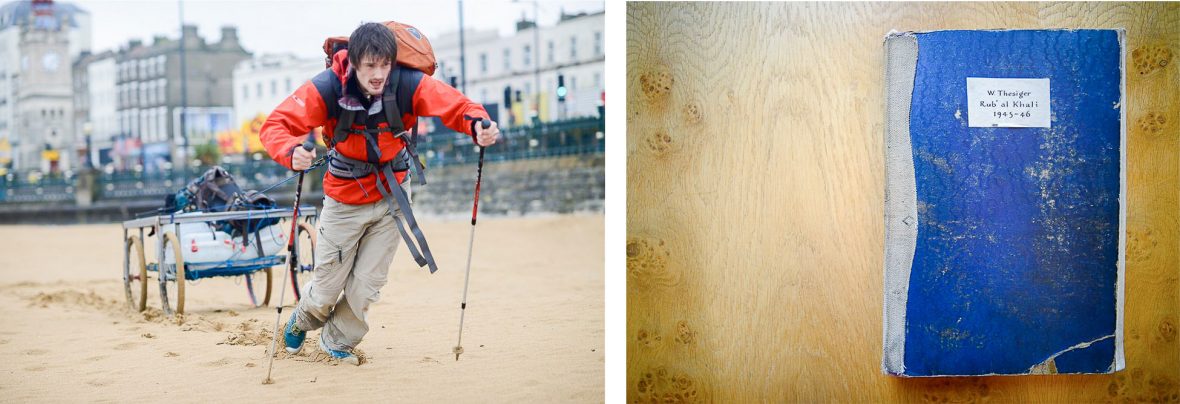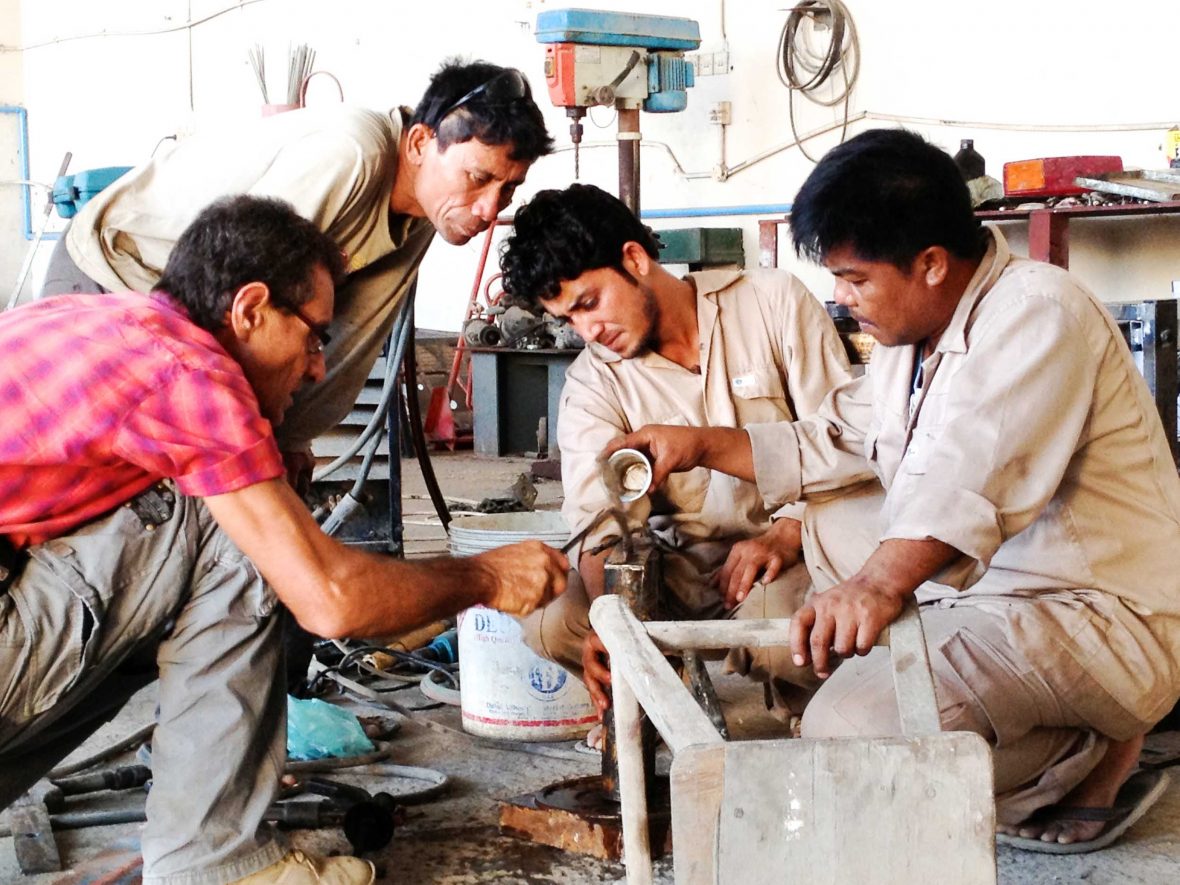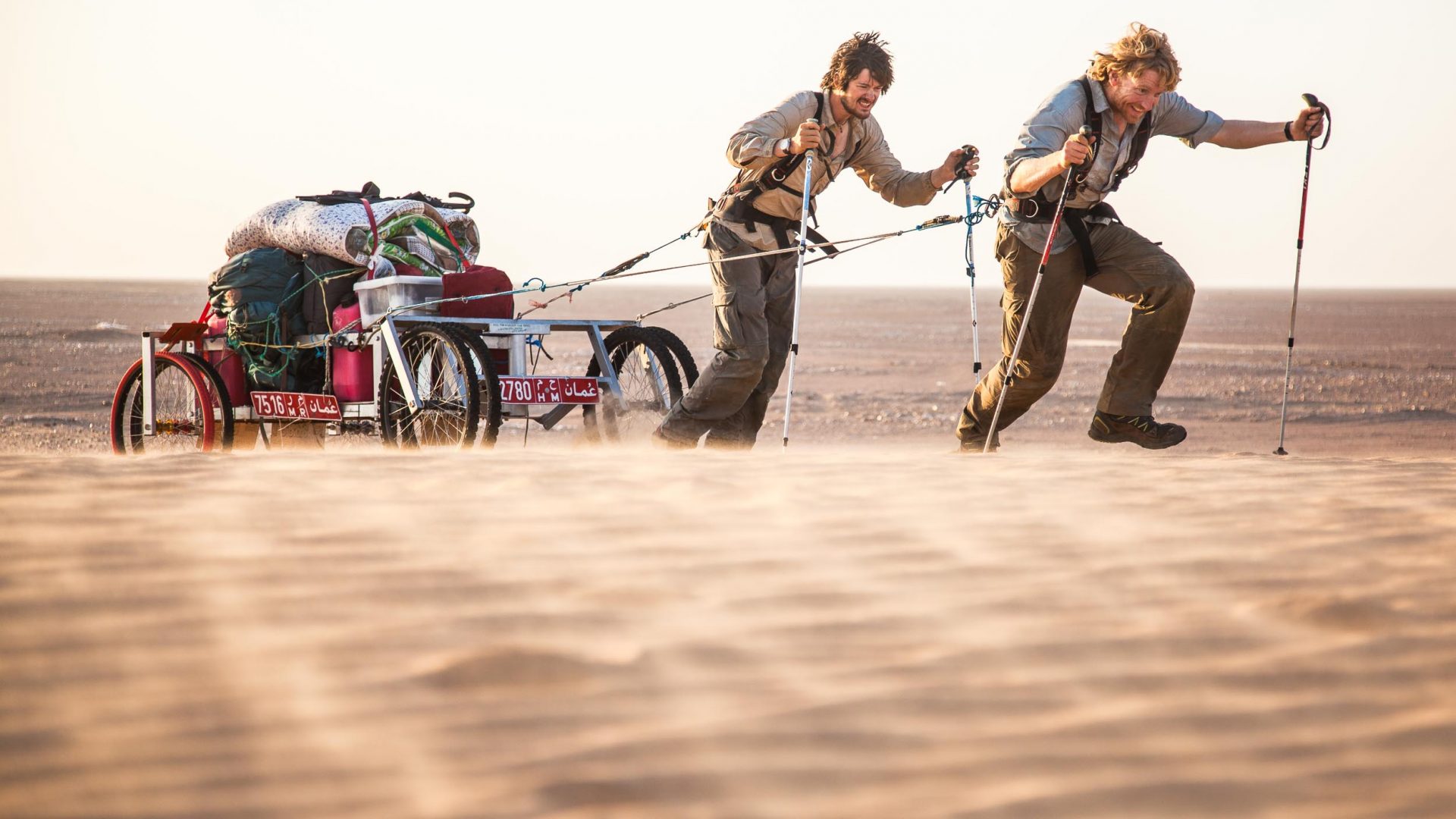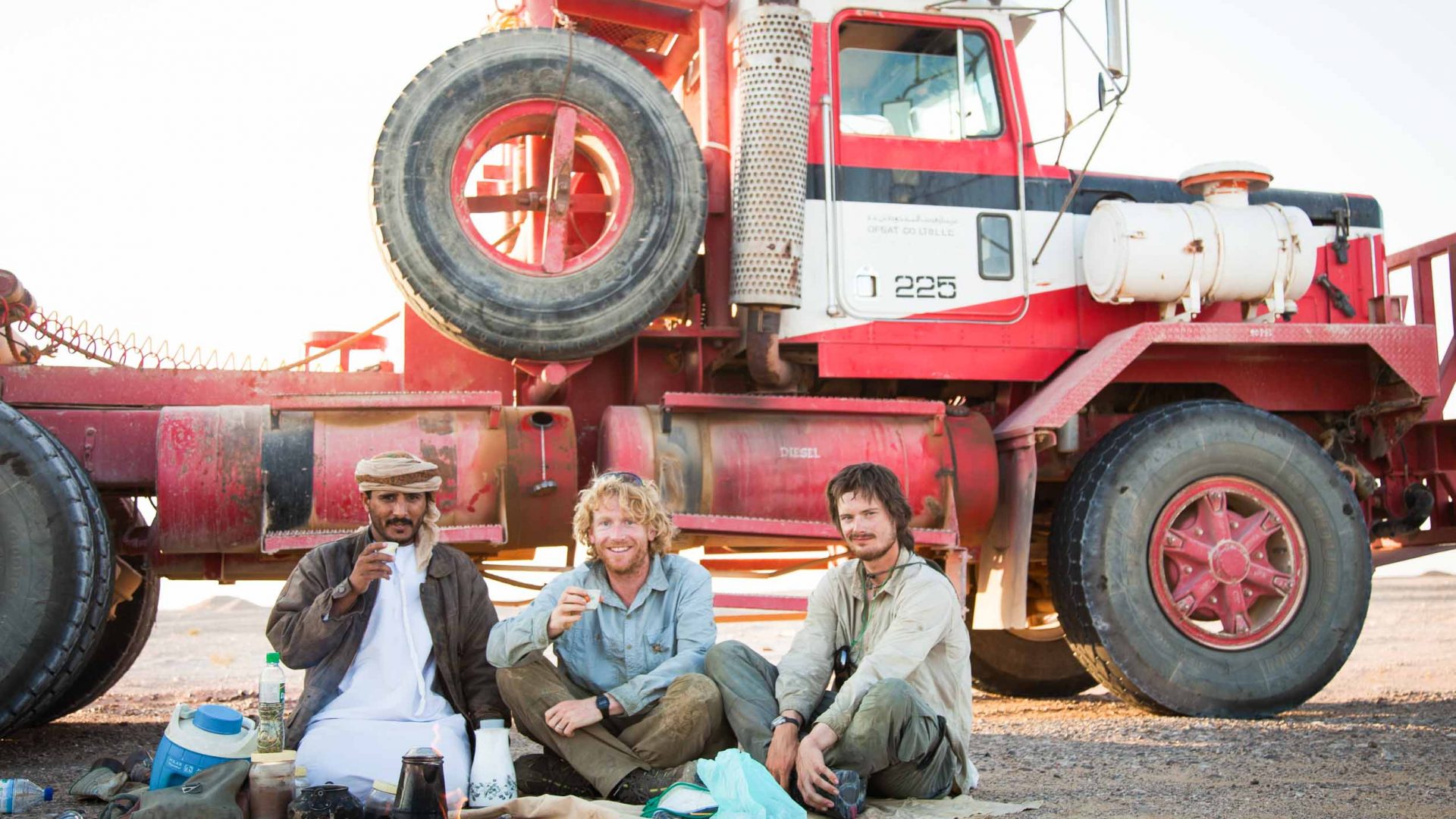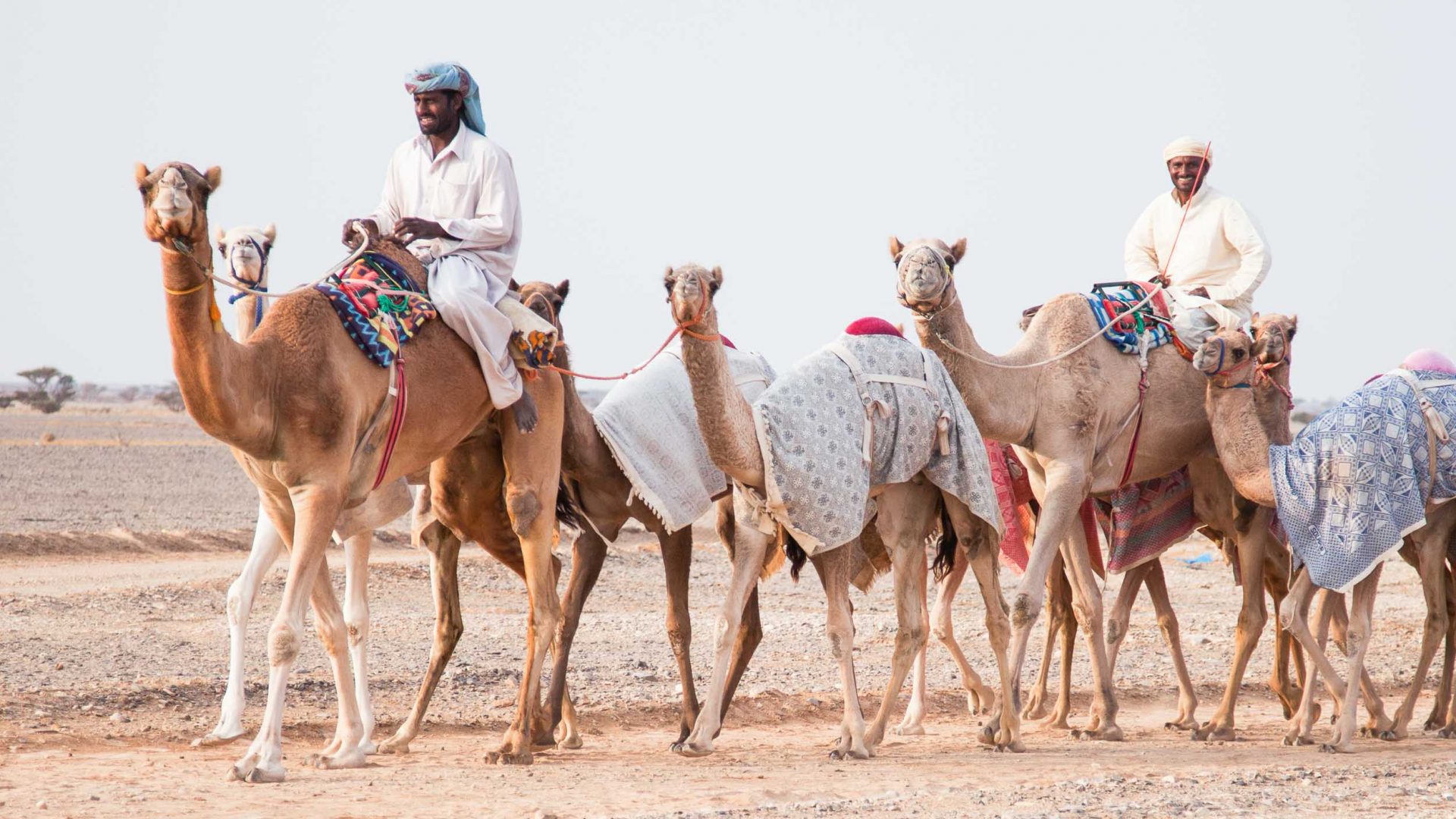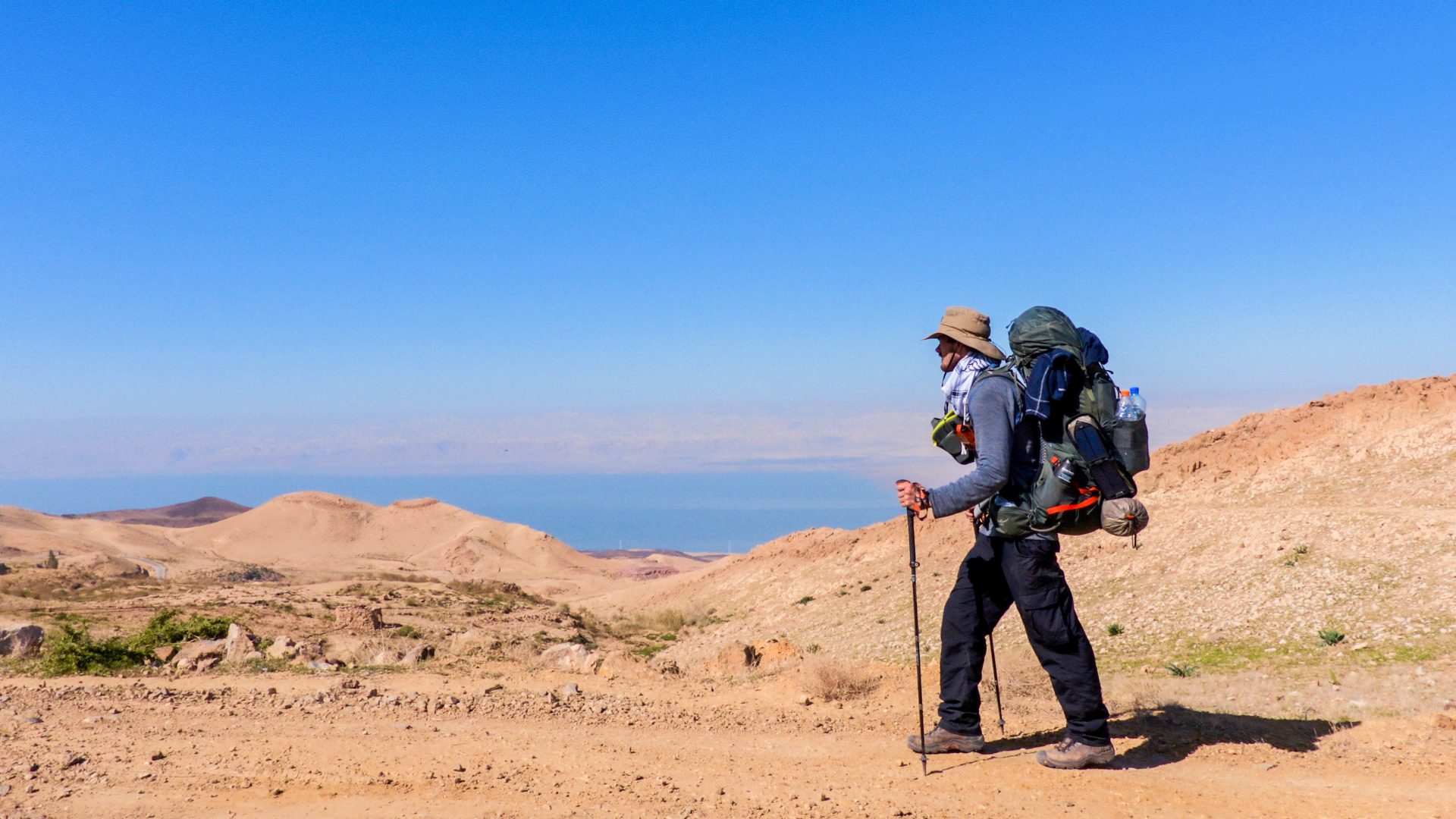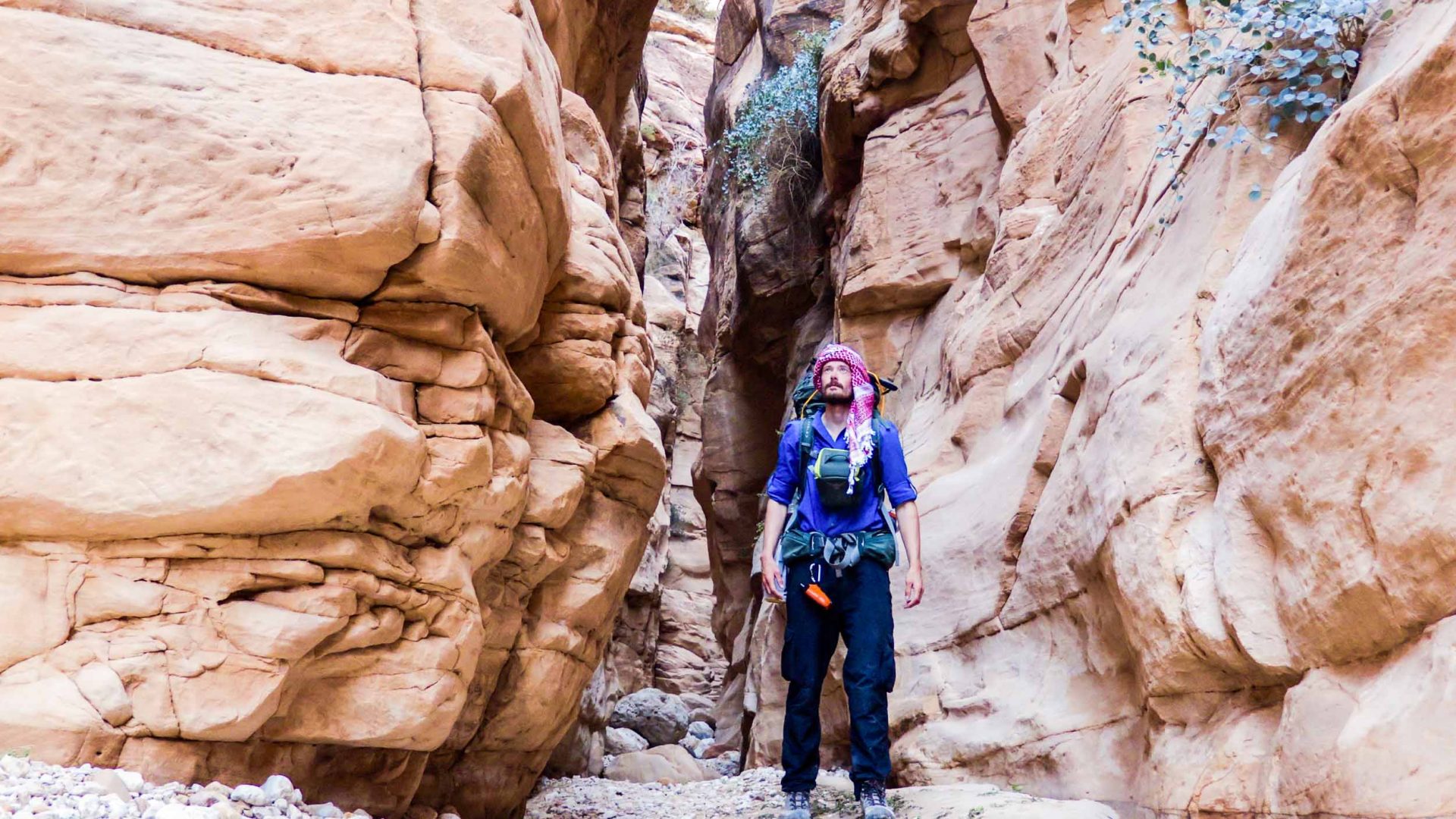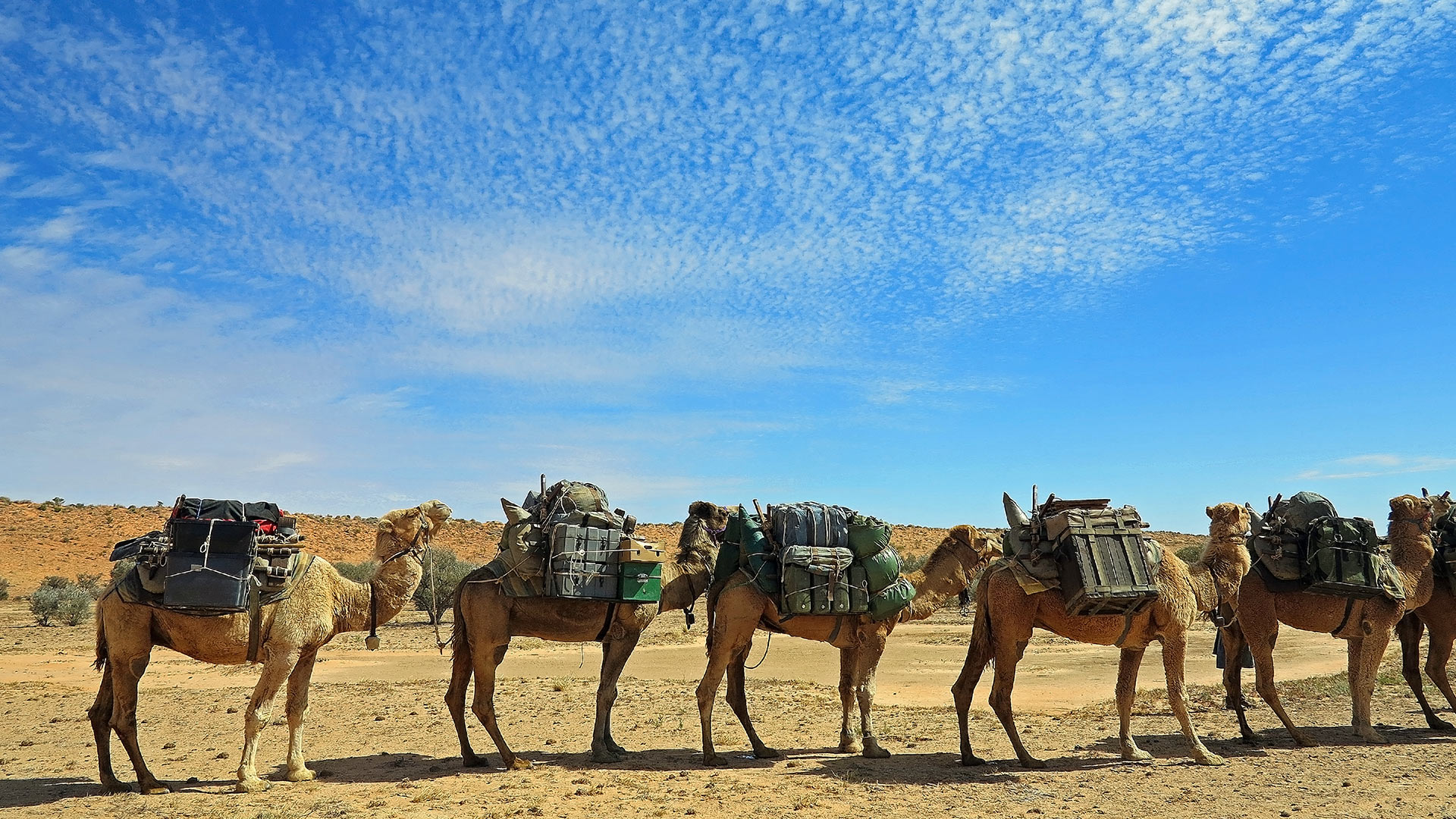One cart, two adventurers, and a desire to replicate explorer Wilfred Thesiger’s 1940s journey across the Arabian sands. Our featured contributor Leon McCarron describes his own 46 days in the wilderness with fellow adventurer Alastair Humphreys.
“Hunger, thirst, heat and cold; I had tasted them in full …”
So wrote the English explorer and great traveler Wilfred Thesiger in his book Arabian Sands, which details the journey he took in the 1940s across the Rub ‘al Khali, or Empty Quarter—the world’s largest sand desert, taking up most of the southern third of the Arabian Peninsula.
Thesiger’s name is synonymous with British exploration and immersive travel. He spent years living with the local nomadic Bedouin tribes, criss-crossing the Arabian Peninsula, and traveled 1000 miles from Salalah on the south coast of Oman to the then-small fishing village of Dubai, perhaps his greatest journey of all.
And so it was in the autumn of 2012 that I received an email with all the eccentricity of Thesiger himself—if not necessarily the poetry:
“Hi Leon. Hypothetically speaking, would you be interested in another long walk. 6-8 weeks. Desert. Pulling a cart. Home for Christmas.”
A friend of Al’s welded together a basic cart. And we took it, in earnest, to trial on the British landscape that most replicates a desert. That is, of course, a beach. Conditions were less than ideal: It was October, it was raining, and we pulled our prototype across damp sand under the watchful eye of an enormous inflatable gorilla from a nearby fun park.
RELATED: Is walking the most adventurous way to travel?
What was clear was that our design was terrible: In an effort to prepare for both the sand and gravel we’d encounter, we had mounted four rugged tires, but they were much too thin. What was also clear was we’d run out of time. Once back home, we hastily doubled the surface area with four more wheels, and flew to Oman with 50 kilograms (110 lbs) of disassembled steel girders in a cardboard box.
Thesiger wrote that he traveled, “ … to find peace in the hardship of desert travel, and the company of desert peoples.” And it was this latter aspect that had the most lasting impact upon him. It was not in the same place, but we found the same hospitality nonetheless.
RELATED: This man walked across Thailand in half a day
Once we crossed the ring of mountains that encircle Salalah, we headed for the ‘Lost City of Ubar’ which, disappointingly, was signposted—it was re-discovered by Sir Ranulph Fiennes, who shares more than a few character traits with Thesiger. From there, we finally entered the Empty Quarter, albeit carefully. We couldn’t go too close to the border with Saudi Arabia as we weren’t granted permission to enter.
In the time that’s lapsed between Thesiger’s journey and ours, oil was discovered on the Arabian Peninsula. And the land was changed forever. Now, partly to facilitate the industry, a road delineates the fringes of the desert; and Al and I crossed it more regularly than we might have hoped. Indeed, we even traveled along it occasionally, wondering what Thesiger would have made of two idiots walking along tarmac in a desert pulling a glorified shopping trolley.
However, at times, we also found ourselves in tandem with Thesiger, and shared certain experiences across the decades. We moved slowly, thoroughly, and the starkness of our surroundings weighed on us every bit as heavily as the pull of the cart. We woke before dawn, rolled up our sleeping bags and relished an hour of joyous cool air. When the sun inevitably breached the flat, fawn horizon, we donned sunglasses and hats, and redoubled our efforts as our poorly acclimatized bodies struggled with the relentless desert heat.
Sometimes I counted my footsteps to a bush, or to some other mark, and this number seemed but a trifle deducted from the sum that lay ahead of us. Yet I had no desire to travel faster. In this way, there was time to notice things. The very slowness of our march, diminished its monotony. I thought how terribly boring it would be to rush about this country in a car. – Wilfred Thesiger, Arabian Sands
We walked long distances—sometimes upwards of 30 miles a day—because there was little to distract us. There were no weather patterns to predict nor remonstrate over, save the occasional sandstorm, and there was little to see other than more of the same sand and gravel that occupied our every waking moment. Yet we were not bored. A journey like this encourages attention to detail, and we began to notice how the texture beneath our feet gradually changed, and how the earth occasionally rose, almost imperceptibly, from perpetual flatness to great, towering dunes sculpted by the wind.
When we eventually reached Dubai, we had been walking for 46 days without changing our clothes. We tramped in along an eight-lane freeway, necks craned skyward in awe of the alien landscape all around. We couldn’t have found a greater juxtaposition if we tried. Our endpoint was atop the Burj al-Khalifa—the tallest building in the world—where we stared out over the vast swathes of desert that surround this fabricated oasis of glitz and glamor.
When I look back at this journey, I’m amazed at how inexpensive it was. We spent less than USD $1000 (£715) each. It was an expedition characterized by good humor at every turn and this, let’s not forget, is the Middle East. Oman is about as safe and welcoming a country as I’d ever visited, and that too is worth highlighting.
Above all, it felt like adventure in its purest form. It was silly, sure, but it was the unpredictability and self-inflicted hardships that made it so memorable. I like to think that Thesiger, while he would have rightly thought we were chancers, might just have had a sly smile to himself by the end.
—-



